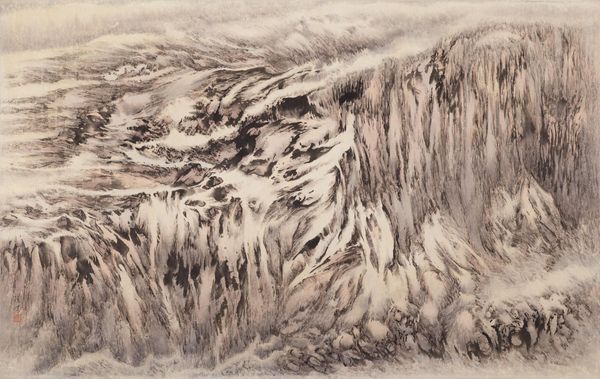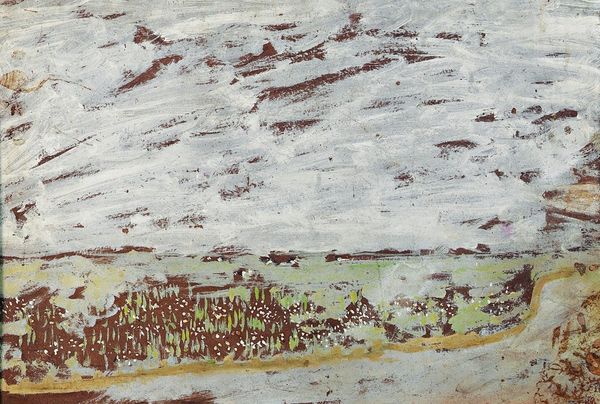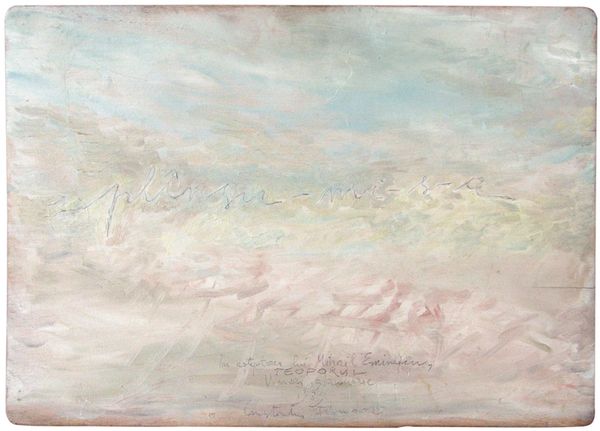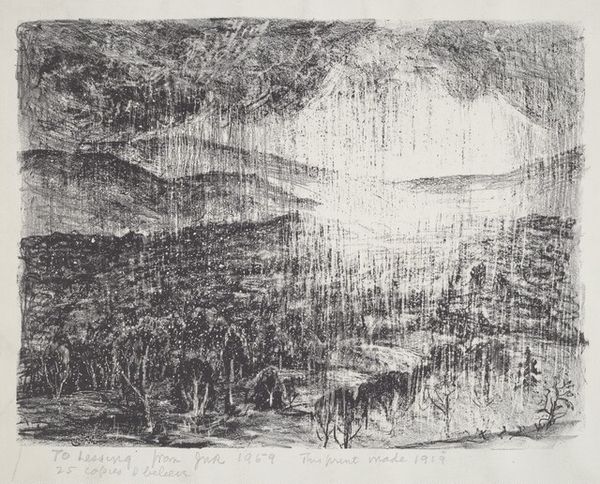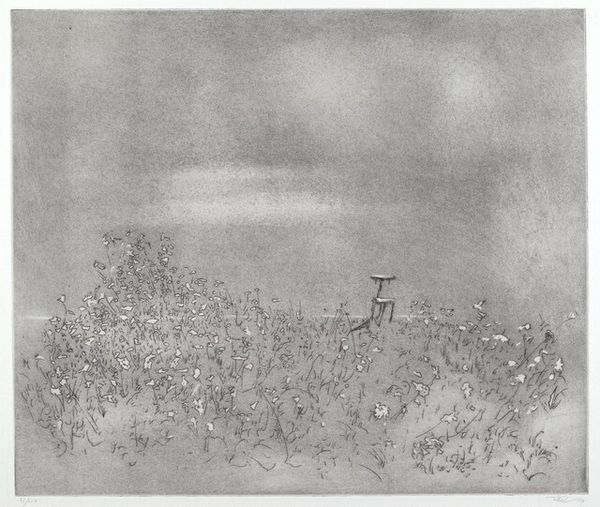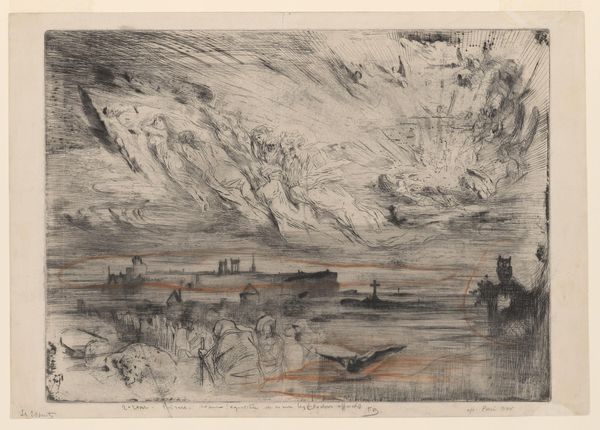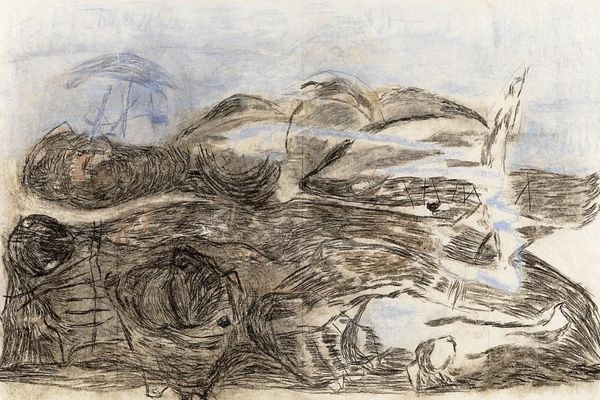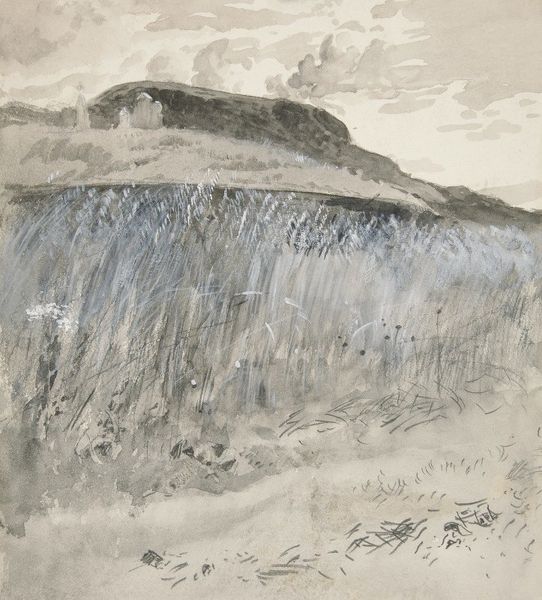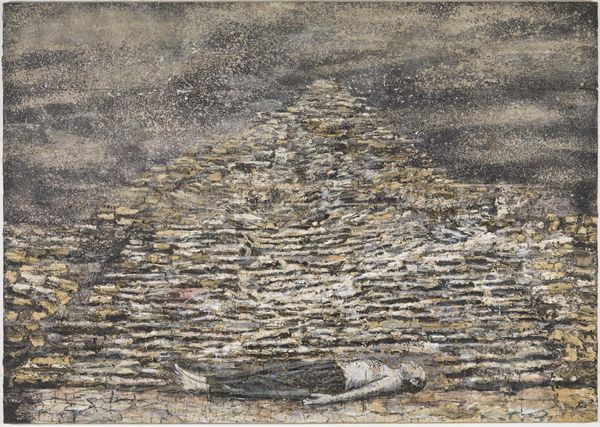
drawing, pencil, graphite
#
drawing
#
contemporary
#
organic
#
pencil sketch
#
landscape
#
pencil
#
graphite
#
modernism
Copyright: Ivan Albright,Fair Use
Curator: Albright's 1976 pencil and graphite drawing, "Near Prague, Czechoslovakia," captures a landscape in transition. Editor: My first impression is one of unsettling dynamism. The frantic, repetitive strokes give it an anxious, almost suffocating feel. It reminds me of an impending storm. Curator: I agree. And I think positioning this work within the political landscape of 1976 Czechoslovakia is crucial. This was a time of strict Soviet control, limited freedoms, and a general sense of oppression, elements that seeped into the psyche. Editor: The choice of materials is interesting. Graphite and pencil, simple tools, accessible to nearly anyone. Was this a conscious choice to democratize his artmaking, rejecting perhaps more opulent materials during politically charged times? Curator: That's a fascinating perspective. It’s very possible Albright's selection of inexpensive, readily available media spoke to broader themes of accessibility and perhaps quiet defiance during an era defined by social unrest and surveillance. His art becomes a subtle form of resistance. Editor: Exactly. Consider also the labor involved in creating such dense textures. Each stroke represents time and effort, a physical engagement with the material and subject matter. Is he trying to communicate labor inequality, the value and dignity of human effort and time? Curator: Absolutely. The seemingly chaotic mark-making suggests resistance. Each tiny mark exists despite constraints and contributes to a unified representation of nature, hinting at the interconnectedness of defiance and resilience. Editor: Albright, with this rather humble combination of graphite and paper, communicates far more than merely a landscape, he critiques consumption while expressing individual, creative capacity under duress. Curator: He delivers both a visual and a sociopolitical experience, highlighting the importance of art as a platform for quiet commentary during politically charged eras. It resonates deeply still. Editor: And that impact comes as much from the process, and Albright's artistic choices related to material, as from his subject. Curator: Yes, thinking about material in that way broadens our understanding, indeed. Thank you! Editor: You're welcome.
Comments
No comments
Be the first to comment and join the conversation on the ultimate creative platform.
